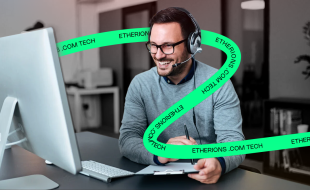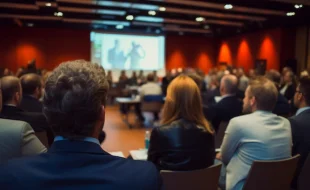Table Of Contents
- What is assistive technology?
- Ways to choose the right assistive technology devices
- Who exactly pays for the assistive technology?
- The difference between assistive technology and adaptive technology
- Here are the ways you can use assistive technology devices
- Vision
- Hearing
- Speech Communication
- Learning, Cognition, and Development
- Mobility, Seating, and Positioning
- Daily Living
- Environmental Adaptations
- Vehicle Modification and Transportation
- Computers and Related Peripherals
- Recreation, Sports, and Leisure
- Wrapping It Up!
The Hidden Gems Of Assistive Technology Devices: Why You’ve Never Heard Of These (But Should)
Assistive technology devices change the lives of those with disabilities. They boost their independence and help them connect with the world.
These tools make everyday tasks simpler and more doable. Just think of voice control, screen readers, or aids for moving around. Its the same thing!
What we can do in a normal way? The assistive technology devices assist them to perform the same tasks.
Moreover, the assistive technology devices helps with seeing, hearing, speaking, and thinking. It also aids mobility and daily living. This tech boosts the quality of life in many ways.
In this blog, we will look at different types of these helpful tools. We’ll see how they help people do well in all parts of their lives.
What is assistive technology?
Assistive technology is more like a boon to people with disabilities. It can be any device, software, or equipment to increase, maintain, and further improve their functionalities.
These assistive technology devices include screen readers, reading assistants, voice recognition software and even switch devices to replace keyboard and mouses.
The devices are mainly used in four specific areas such as:
- Visual: People who are visually challenged, suffer from low vision, or are colorblind.
- Auditory: people who suffer auditory challenges or have any other kind of hearing impairments.
- Motor: People who have very limited motor control suffer from muscle sslownessspasms and tremors.
- Cognitive: People who actually feel it difficult to learn, memorize, or have attention disorders.
These groups of people strongly rely on various assistive technology devices that can help them to access digital content.
Moreover, the entire process strongly follows the Web Content Accessibility Guidelines or WCAG. This specific framework is designed to help the creators to ensure that their mobile applications, or the digital content itself is accessible to disabled people.
Ways to choose the right assistive technology devices

The professionals and consultants who have expertise in assistive technology devices majorly take part in decision-making.
This AT team includes:
- family doctors,
- regular as well as special education teachers,
- rehabilitation engineers and
- speech-language pathologists
- Assistive technology devices manufacturers and consultants.
In the following section, you will learn more about the professionals who take part in the entire process.
- AOTA, American Occupational Therapy Association
- ASHA, American Speech-Language-Hearing Association
- CEC, Council for Exceptional Children
- LDA, Learning Disability Association of America
- RESNA, Rehabilitation Engineering & Assistive Technology Society of North America
- Service organizations and manufacturers offer important information as well. Start with the list of ATIA Alliance Partners.
Who exactly pays for the assistive technology?
The answer mainly lies with three basic things—the technology is being used, the user and how it is going to be used.
There are some AT or assistive technology devices that may cost you a little to nothing. However, there can be a few which can cost you a lot.
Here are some examples to make things clear for you!
- Firstly, the school administration pays for the special education learning materials, including the technology, as per the IEP.
- Secondly, there are various government programs such as your social security or state Medicaid agencies who pay for certain assistive technology devices. However, they only sponsor if the doctor prescribes it as a necessary device.
- Next is the private health insurance sponsors. They make a huge monetary contribution for assistive technology, only if the doctor prescribes any necessary medication.
- Fourthly, rehabilitation and job training progress are mainly funded by the government and private agencies.
- Lastly, employers often pay for assistive technology for an employee to help perform the tasks.
Other than these, private foundations, charities, and civic organizations also provide funds for assistive technologies.
Moreover, ATIA funding resources help with sources and resources for the investigation as a prospective option.
The difference between assistive technology and adaptive technology
Adaptive technologies are assistive devices. They help those with specific disabilities. Braille displays are a great example. People with visual disabilities use them.
They read content on web pages or apps quickly. Other tech is more widely used. But, certain groups may find them more useful.
Closed captions help those with hearing issues. They also help those learning a new language. Plus, anyone can use them with the sound off.
Here are the ways you can use assistive technology devices

Technology has assisted humans with myriad activities with the aid of technology for generations. It is said that eyeglasses originated in Italy somewhere between 1268 and 1289.
The first wheelchair was purportedly used around the 5th century in China. Speech-generating devices operated through eye gaze are high-tech solutions.
On the other hand, duct tape wrapped around a pencil or pipe insulation around a spoon handle serves as low-tech homemade grips. The use of paint for wayfinding is an example of no-tech assistive technology.
Vision
There are numerous products designed to assist individuals who are blind or have low vision in their daily activities. They aid in activities such as navigating on a computer, mobility, and other daily activities. Some of them include:
- Magnifiers enlarge text and images.
- Talking devices, like thermostats, speak information aloud.
- Braille displays show text in raised dots.
- Screen reading software reads on-screen text aloud.
- OCR systems convert printed text to speech.
- Large print makes reading easier.
- Phones have large, easy-to-feel buttons.
Hearing
For the hard of hearing or Deaf, there are a range of products that assist with communication and daily living. These are:
- Personal amplifiers boost sound levels.
- Wireless systems improve TV audio.
- Vibrating alarm clocks provide silent alerts.
- Doorbells use flashing lights to signal visitors.
- Portable captioning systems display text on screens.
- Dual keyboards allow easy face-to-face talks.
- Amplified telephones increase sound.
- Captioning phones display written words. Mobile devices offer texting and special apps.
Speech Communication
People with speech impairments have equipment that helps them speak and communicate. Some of this equipment also hhelpswhen talking to other people face-to-face. Some of these are:
- Voice amplifiers make speech louder.
- Fluency devices assist with smoother speech.
- Artificial larynxes produce sound.
- Communication boards use pictures or symbols.
- Speech output software speaks typed text.
- Symbol software creates visual aids.
- Speech-generating devices speak for the user.
Learning, Cognition, and Development
For individuals in need of help with learning, concentration, recalling, or being organized, numerous assistive devices exist. They include:
- Memory aids assist with recall.
- Text-to-speech software aids learning.
- Reminder systems give prompts.
- Note-taking systems help record information.
- Mobile devices offer specialized apps.
- Audiobooks provide accessible reading.
Mobility, Seating, and Positioning
For individuals in need of mobility assistance, there are devices that assist and support moving. Some of these include:
- Wheelchairs help people move.
- Walkers provide stability.
- Canes offer balance.
- Crutches support weight.
- Scooters offer mobility.
- Power chairs allow independent movement.
- Postural supports improve positioning and comfort.
Daily Living
Most of the products assist individuals with disabilities or older people to maintain their independence in performing everyday activities such as bathing, dressing, grooming, and feeding. Some of them are:
- Dressing aids help with zippers and buttons.
- Long shoehorns ease putting on shoes.
- Reachers grab items.
- Adapted tools aid cooking and eating.
- Walker bags carry items.
- Wheelchair cup holders hold drinks.
- The book stands support reading materials.
- Automatic soap dispensers offer easy access.
- Vacuum robots clean floors. Switch-adapted appliances simplify use.
Environmental Adaptations
There are also assistive devices that allow persons with disabilities to enter buildings and operate items such as doors, lights, and temperature. Such devices are:
- Door openers automate entry.
- Lifts raise people between levels.
- Ramps provide gradual inclines.
- Remote systems control appliances and electronics.
- Devices use switches, voice, or other methods for activation.
Vehicle Modification and Transportation
For individuals who require assistance with transport, there are modifications that make vehicles more accessible. Some of these are:
- Hand controls replace foot pedals.
- Tie-downs secure wheelchairs.
- Ramps aid vehicle entry.
- Lifts raise people into vehicles.
- Raised roofs add headroom.
- Adaptive seat belts improve safety.
Computers and Related Peripherals
There are also assistive devices that enable disabled individuals to access computers with ease. They include:
- Screen magnification enlarges on-screen content.
- Alternative keyboards and input devices offer different control methods.
- Voice recognition software converts speech to text.
Recreation, Sports, and Leisure
Numerous special products are manufactured to assist individuals with disabilities in participating in enjoyable activities and sports. Some of them include:
- Switch-adapted toys offer easy play.
- Card shufflers automate card games.
- Camera mounts stabilize cameras.
- Adapted sports gear allows participation.
Wrapping It Up!
Assistive technology devices are key to helping those with disabilities live full lives. These devices allow them to handle daily challenges.
With the right tools, people gain more freedom. New changes also open up for learning, talking with others, and having fun. Assistive tech makes life better for everyone at work, playing, or just going about their day.
Read Also:














